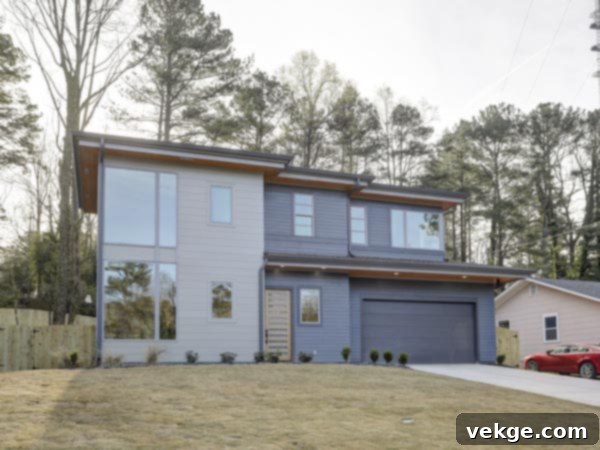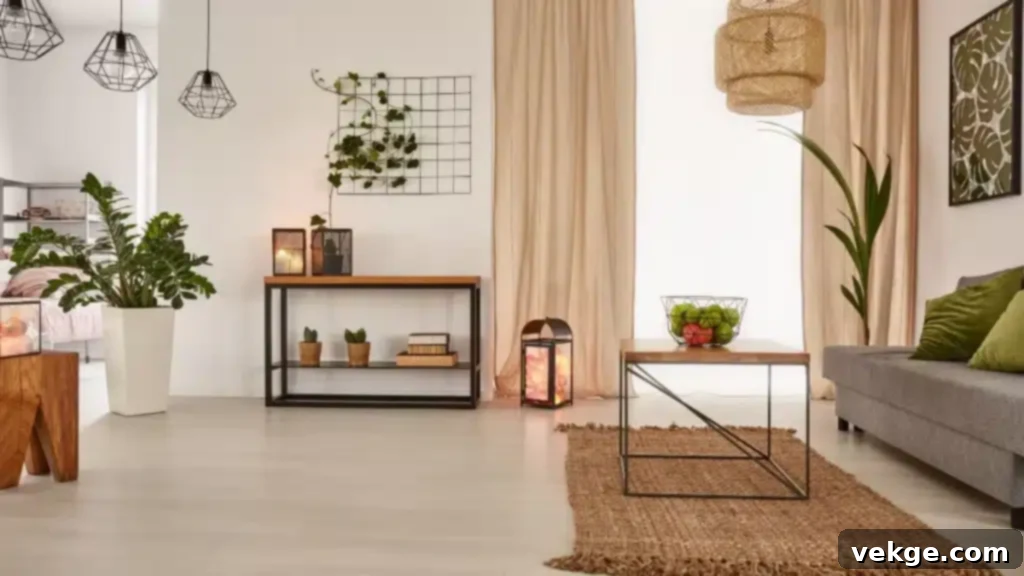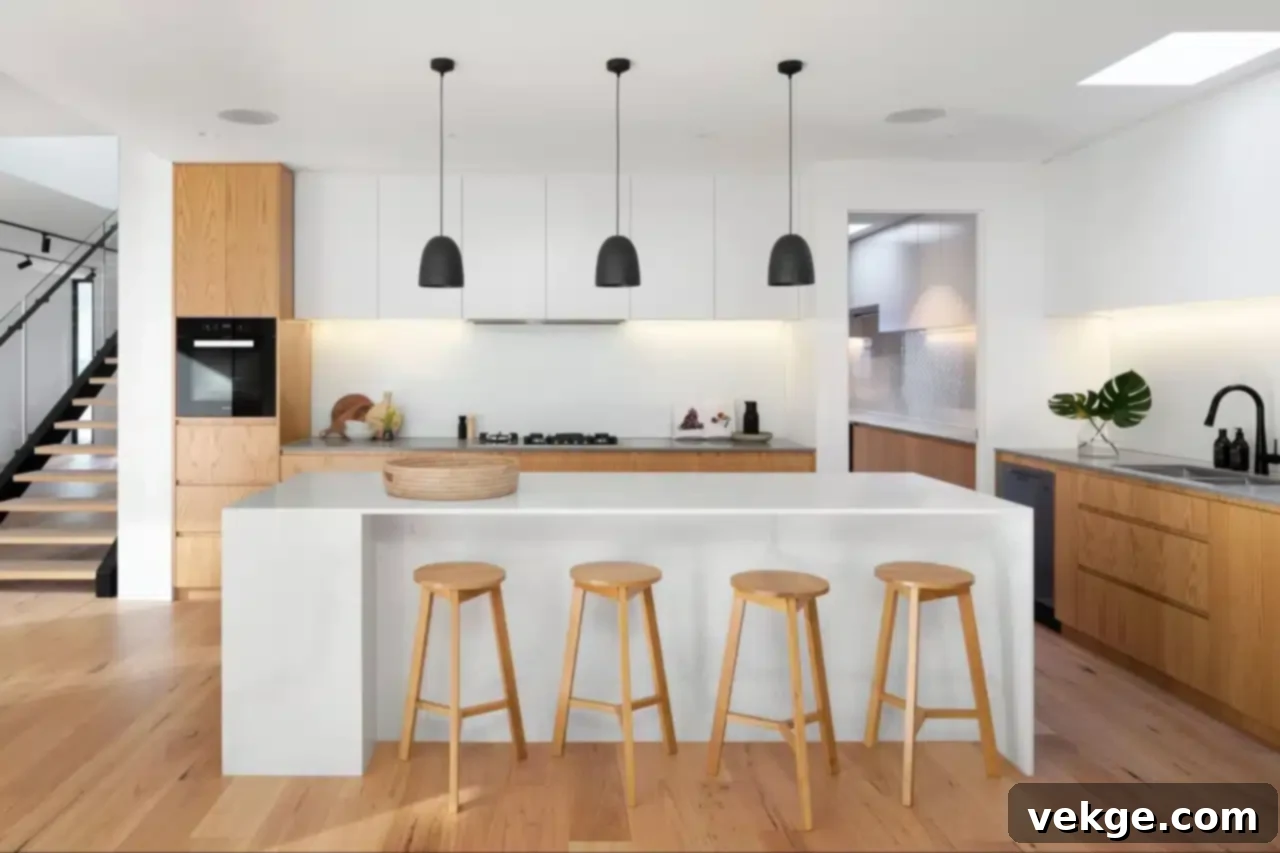Expand Your Horizon: Essential Tips for a Seamless Home Addition Project
Do you adore your current home and cherish your neighborhood, making the thought of moving almost unbearable? Yet, a common dilemma arises: your family is growing, or your lifestyle demands more space for enhanced convenience and comfort. Perhaps you’re eagerly awaiting a new addition to the family, or you’re simply tired of working from a cramped corner of your dining room table and dream of a dedicated home office. The need for additional space is clear, and you want to achieve it as soon as possible without uprooting your life.
The solution to this increasingly common challenge is often closer than you think: a thoughtfully planned home extension. Adding to your existing house can transform your living environment, providing the square footage you crave while allowing you to remain in the community you love. This comprehensive guide will walk you through eight crucial tips for expanding your home, helping you confidently embark on this exciting project and significantly improve your quality of life.
1. Define Your Needs: Determining the Right Type of Home Expansion

The first and most critical step in any home expansion project is to precisely determine what you need and what purpose your new space will serve. This isn’t just about adding square footage; it’s about optimizing your living environment to meet your specific needs and desires. Are you envisioning a spacious new family room perfect for gatherings, a luxurious master suite with an ensuite bathroom, a dedicated home office that fosters productivity, or perhaps a multi-purpose playroom for the kids?
Consider whether you need a single-story addition, a second-story expansion, a simple “bump-out” for a larger kitchen, or even converting existing underutilized spaces like a garage or attic. Think about how large your home addition needs to be and, crucially, how it will seamlessly connect to the rest of your home, both functionally and aesthetically. Don’t hesitate to sketch out your ideas. Visualizing the new layout and flow of your home will be invaluable in communicating your vision to professionals and refining your plans. A clear vision from the outset will save time, reduce costs, and ensure the final result truly meets your expectations.
2. Enlist the Experts: Hiring a Qualified Home Addition Contractor
Unless you possess extensive architectural and construction expertise yourself, attempting a significant home expansion project alone is strongly discouraged. Such complex undertakings require a specialized skill set, a deep understanding of structural integrity, local building codes, and project management. Your best course of action is to rely on experienced professionals. A reputable home addition contractor will assess your current situation, help translate your ideas into actionable design plans, navigate the often-complex permit process, ensure compliance with all local regulations, and ultimately construct your dream addition.
A skilled home addition contractor brings a wealth of knowledge and creative solutions to the table. They might suggest possibilities for your home extension that you hadn’t even considered, optimizing space, light, and flow in innovative ways. Engaging a professional will not only ensure the structural integrity and safety of your addition but also prove to be a significant time and money saver in the long run. Their expertise minimizes costly mistakes, streamlines the construction process, and delivers a high-quality finish that significantly enhances your home’s value and livability, far surpassing any DIY attempt by an amateur.
3. Foster Open Dialogue: Discussing Your Vision with Your Contractor

Before committing to any contractor or even receiving a final quote, it is paramount to have a thorough and open discussion about your expectations, priorities, and, most importantly, your budget. Transparency is key. Clearly communicate any financial limitations you have for your home expansion project. A good contractor will listen attentively, offer practical solutions, and be willing to work within your parameters to maximize the value you receive for your investment.
If a contractor appears unwilling to respect your budget constraints, pushes for more expensive options without justification, or seems uninterested in finding cost-effective alternatives, it’s a strong indicator that you should explore other options. While home extension projects are undoubtedly a significant investment, they shouldn’t necessitate draining all your life savings. A professional contractor should act as a partner, helping you make informed decisions, prioritize features, and understand where your money is being spent, ensuring you achieve your dream addition without financial strain.
4. Strategic Placement: Carefully Choosing New Doors and Windows
Your home addition should be an integral part of your house, not simply resemble an uninspired box tacked onto the side. Thoughtful design, especially concerning fenestration (the arrangement of windows and doors), is crucial. The strategic placement of new doors and windows will significantly impact the aesthetics, functionality, and overall feel of your expanded space. Natural light is a powerful design element; it can make a room feel larger, more inviting, and reduce the need for artificial lighting during the day.
As you plan your extension, meticulously consider the orientation of your home, the path of the sun, and existing architectural elements. Ideally, every door and window you add should be positioned to maximize natural light exposure and offer desirable views, while also considering privacy. Don’t overlook the transformative power of skylights or strategically placed clerestory windows, which can flood a new space with light from above, creating an airy, bright, and truly spacious ambiance. Beyond aesthetics, consider the energy efficiency of your chosen windows and doors, opting for double or triple-paned units that provide excellent insulation and reduce energy costs.
5. Seamless Integration: Harmonizing Your Expansion with Your Home’s Aesthetic

A successful home expansion should look as though it was always meant to be there, not “stick out like a sore thumb.” The goal is a cohesive design where the new addition seamlessly aligns with your home’s existing architectural style and character. Work closely with your home addition contractor and designer to plan an expansion that complements the original structure, rather than clashing with it. This involves careful consideration of exterior materials, rooflines, window styles, and even smaller details like trim and siding color.
Matching the exterior finishes, such as brick, stucco, or siding, and ensuring that roof pitches and materials are consistent will create a harmonious façade. For the interior, you have more flexibility. While some homeowners prefer a completely uniform aesthetic, others opt for a distinct look in the new space that still complements the overall home decor. Discuss your preferences for flooring, paint colors, and fixtures with your contractor to ensure the interior flow feels natural and inviting, creating a truly unified and enhanced living environment.
6. Legal Compliance: Obtaining Necessary Permits and Approvals
Even the most meticulously planned and beautifully designed home expansion will face significant hurdles if you fail to secure the necessary permits and approvals. This step is not merely bureaucratic; it’s crucial for ensuring the safety, structural integrity, and legality of your project. Building codes exist to protect homeowners and the community, ensuring that construction meets minimum standards for safety and quality. Without proper permits, you risk fines, forced demolition, difficulty selling your home, and invalidation of your homeowner’s insurance in case of an issue.
Before any construction begins, contact your local municipality or building department to inform them about your home addition project. Inquire specifically about the permits, inspections, and approvals required for your type of extension. You will likely need to submit detailed architectural plans for review. Be prepared to make adjustments to your plans if necessary to fully comply with local zoning laws, setback requirements, and building codes. Your contractor should be well-versed in this process and can guide you, often handling the permit applications on your behalf, ensuring a smooth and compliant construction journey.
7. Living Through Renovation: Deciding Whether to Stay or Temporarily Relocate

Depending on the scope and nature of your home addition, you’ll need to make a critical decision: whether to remain in your home during the renovation process or seek temporary accommodation elsewhere. Staying put can offer significant cost savings, as you avoid rental expenses, and it allows you to closely monitor the project’s progress day by day. However, it comes with a considerable set of challenges. Living amidst ongoing construction often means enduring constant noise from drilling, hammering, and sawing, as well as significant dust, dirt, and potential utility disruptions (like temporary loss of water or electricity).
Consider the impact on your family’s daily routine, especially if you have young children or work from home. The disruption can be stressful and intrusive. On the other hand, relocating, even for a few weeks or months, provides a sanctuary from the chaos but adds to the overall project cost. Discuss the expected duration and intensity of the disruption with your contractor to make an informed decision that balances your budget, comfort, and peace of mind throughout the construction phase.
8. Enhance Sustainability: Consider Energy-Efficient Upgrades for Your Home
A home expansion project presents an excellent opportunity to not only gain more space but also significantly improve your home’s overall energy efficiency. Instead of just adding new walls, think about comprehensive upgrades that will pay dividends in comfort, cost savings, and environmental impact for years to come. This could involve improving the insulation in your existing walls and attic, replacing old, drafty windows with modern, energy-efficient ones (such as double or triple-paned, Low-E glass), or even upgrading your HVAC system to a more efficient model that can adequately heat and cool the larger footprint of your home.
Beyond the basics, consider smart home technologies for automated climate control, energy-efficient appliances for your new kitchen or laundry room, and even exploring renewable energy options like solar panels. These energy-efficient upgrades, integrated with your new expansion, will not only make your entire home more comfortable and reduce your monthly utility bills but also significantly increase your property’s market value. Investing in sustainability during your renovation is a smart, forward-thinking decision that benefits both your wallet and the planet.
9. Financial Planning: Budgeting and Financing Your Home Addition
Undertaking a home addition is a significant financial commitment, making meticulous budgeting and a clear understanding of your financing options crucial. Start by creating a detailed budget that accounts for all potential expenses: architectural fees, contractor costs, materials, permits, utility hookups, interior finishes, and landscaping. It’s always wise to allocate an additional 10-15% of your total budget as a contingency fund for unexpected issues that inevitably arise during construction.
When it comes to financing, several avenues are available. Homeowners often explore home equity loans, which provide a lump sum based on your home’s equity, or home equity lines of credit (HELOCs), which offer flexible access to funds as needed. Cash-out refinances are another option, allowing you to refinance your existing mortgage for a higher amount and take the difference in cash. Discuss these options with a financial advisor to determine the best fit for your situation, ensuring your dream home expansion doesn’t become a financial burden.
10. Outdoor Harmony: Integrating Your Expansion with Landscaping
A successful home expansion doesn’t stop at the exterior walls; it extends into the surrounding landscape. The newly added structure should integrate seamlessly with your outdoor space, enhancing both curb appeal and functionality. Consider how the addition will affect existing pathways, gardens, and outdoor living areas. You might need to adjust or create new landscaping elements to complement the new footprint.
For instance, if your addition includes new doors leading to the backyard, think about adding a patio, deck, or pathway that transitions smoothly from the interior to the exterior. Planting new shrubs, trees, or flowerbeds around the base of the addition can help soften its lines and make it feel established. A thoughtful landscape design can enhance the visual appeal of your home, improve drainage around the new foundation, and create inviting outdoor spaces that truly extend your living area beyond its walls.
Expanding your home is a rewarding journey that allows you to tailor your living space precisely to your evolving needs, without sacrificing the comfort and familiarity of your beloved home and neighborhood. By carefully planning, engaging the right professionals, maintaining open communication, and considering both aesthetic and practical details from permits to energy efficiency, you can confidently navigate this exciting project. These tips are designed to guide you toward a successful home addition that not only provides the extra space you desire but also significantly enhances your lifestyle and increases your property’s value for years to come.
